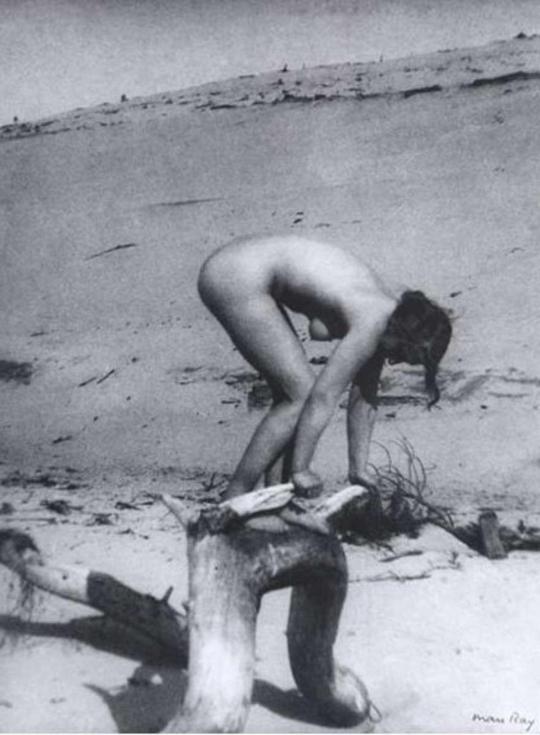#Helen Hessel Grund
Text

Helen Hessel Grund. Arcachon, France. 1925
Photo: Man Ray
415 notes
·
View notes
Text
Five names on the diagrams appear without surnames: Ricka, Carla, Traute, Linda and Escha and they are all women. How do we read this? Surnames are not granted to women as the surname marks a line of property; the woman’s surname is fungible to that property, of her husband and a line of misogynistic primogeniture from him. There is another example on the diagram: Helen Grund was often known as such, with her maiden name, but Benjamin lists her on the diagram as “Frau Hessel”, the wife of Franz Hessel. Benjamin provides a philosophy of proper names in his essay on language 'Über Sprache überhaupt und über die Sprache des Menschen' (1916) but he touches more directly on the subject in 'Short Shadows (I)' from 1929, which could be granted either a generous or an extremely ungenerous reading. Under this consideration it seems important to read the diagram again: not just as a Stammbaum, a family tree, but as a network of property and domination through property and its associate: marriage.

1 note
·
View note
Text
Weimar memories: walking Berlin … in a flâneur's footsteps
Armed with Franz Hessel’s cult guidebook, Walking in Berlin, published in 1929, Vanessa Thorpe is transported back to the city’s decadent period
Time travel is still a long way off as a short break option, but happily there are some good approximations. Last month, in a very chilly but sunny Berlin, I opened up a copy of Franz Hessel’s cult 1929 guidebook, Walking in Berlin: A Flâneur in the Capital, and, sure enough, the jaunty, literary tone of the book, now published in English for the first time, is like a private invitation back to the city’s most beguiling era.
Hessel had an appetite for cafe culture and people-watching, although his own life was easily as colourful as the life he observed around him. His open relationship with his wife, fellow writer Helen Grund, inspired Henri-Pierre Roché’s famous ménage-a-trois novel Jules et Jim. He was, to use his preferred French term, a flâneur – a man of means at ease in the cosmopolitan hub of Weimar Germany.
(via Weimar memories: walking Berlin … in a flâneur's footsteps | Travel | The Guardian)
1 note
·
View note
Quote
More interesting is his 1913 novel, The Junkshop of Happiness, which fictionalizes the author’s revels in Munich with the likes of poet Karl Wolfskehl and “bohemian countess” Franziska zu Reventlow, as well as a subsequent period in Paris, when he entered into a ménage with art collector Henri-Pierre Roché and art student Helen Grund. Better known, however, is Roché’s own roman à clef about this period, which came 40 years later: Jules et Jim.
An Island of Peace: Amanda DeMarco on Franz Hessel - Los Angeles Review of Books
0 notes
Text

Helen Hessel (on the diagram as “Frau Hessel”, but also often known as Helen Grund) photographed in Paris around 1929
0 notes